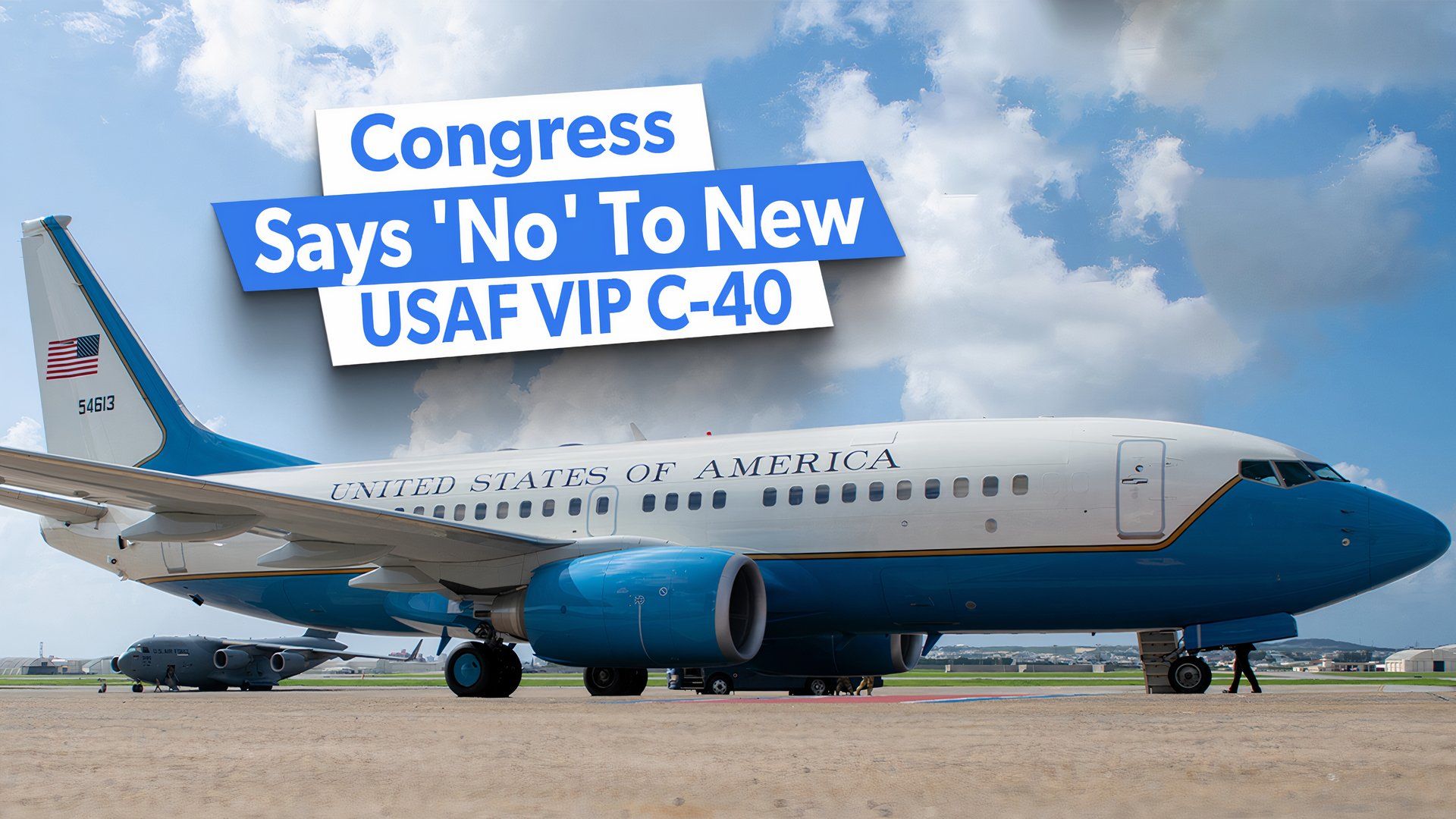Members of the United States Congress and other senior US government officials (such as the Joint Chiefs of Staff and members of the Presidential Cabinet), regardless of political party affiliation or ideology, tend to enjoy indulging in the perks and trappings of office, including VIP transport. That’s where the Boeing C-40 comes into play.
The same Congressional lawmakers who enjoy the perks of the C-40 recently rejected the USAF’s request for the allocation of funds to purchase a second C-40. Simple Flying now attempts to answer the question of why this rejection took place.
C-40 basics (early history and specifications)
Before we discuss the why and the wherefore of the Congressional snub of the USAF on the C-40, let’s review the basic facts and figures of this VIP aircraft.
As noted by the official US Air Force Fact Sheets:
“The C-40 B/C is based upon the commercial Boeing 737-700 business jet. The body of the C-40 is identical to that of the Boeing 737-700, but has winglets. Both models have state of the art avionics equipment, integrated GPS and flight management system/electronic flight instrument system and a heads-up display. Heading the safety equipment list is the traffic collision avoidance system and enhanced weather radar. The aircraft is a variant of the Boeing next generation 737-700, and combines the 737-700 fuselage with the wings and landing gear from the larger and heavier 737-800. The basic aircraft has auxiliary fuel tanks, a specialized interior with self-sustainment features and managed passenger communications.”
The C-40 made its maiden flight in April 2000 and officially entered service on April 21, 2001. It was intended to replace the aging C-137 Stratoliner, C-22, and C-32 aircraft fleets. (The latter two are the military versions of the Boeing 727-100 and 757, respectively.) The US Navy and Marine Corps C-40A variant is named the “Clipper” (a nautical nickname, apropos for the USN). The US Air Force C-40B/C variants have not been assigned an official moniker.
Some vital stats for the USAF version include:
|
Crew: |
10 (varies with model and mission) |
|
Fuselage Length: |
110 ft, 4 in (33.6 m) |
|
Height: |
41 ft, 2 in (12.5 m) |
|
Wingspan: |
117 ft, 5 in (35.8 m) |
|
Max Takeoff Weight: |
171,000 lb (77564.29 kg) |
|
Powerplant: |
2x General Electric (GE) CFM 56-7B27 turbofan engines |
|
Cruise Speed: |
322 mph (518.2 km/h; 279.8 kn; Mach 0.419) |
|
Service Ceiling |
41,000 ft (12,727 m) |
|
Maximum Range: |
4,500 to 5,000 NM (based on payload) unrefueled range |
|
Maximum Load: |
C-40B: 26 to 32 pax; C-40C: 42 to 111 pax |
Among the perks and creature comforts of the C-40B:
- Crew rest area
- Distinguished Visitor (DV) compartment with sleep accommodations
- Two galleys
- Business Class seating with worktables.
Reportedly, a total of 28 C-40s have been built thus far, with four of them being USAF “B” models and seven of them being USAF “C” specimens. Unit cost, according to the above-quoted USAF Fact Sheet, is $70 million USD per airframe (using April 2020 figures).
So then, why the Congressional kibosh?
According to a Breaking Defense article penned by Michael Marrow and Valeria Insinna:
“Alongside a call for one C-40 aircraft in the fiscal 2025 budget submission, the Air Force additionally asked Congress to rearrange FY24 funds to procure a second aircraft, the service confirmed to Breaking Defense. Known as a reprogramming, the request was denied by Congress in July. Lawmakers in several draft defense bills similarly zeroed out or drastically reduced about $329 million in funds for the C-40 included in the FY25 request.”
One cannot help but wonder why Congress rejected this reprogramming request, especially given the aforementioned aging issues with the C-32 fleet. The current C-32A fleet can only support 59% of the Top Five (the Vice President, First Spouse, Secretary of State, Secretary of Defense [SECDEF], and the Chairman of the Joint Chiefs of Staff [CJCS]) user requests.
The authors of the Breaking Defense article don’t provide what can be reasonably inferred to be a clue:
Was the Congressional vote an act of reprisal against Boeing for this embarrassing incident?
Perhaps the aircraft manufacturer’s recent safety controversies and the resultant public relations nightmares plaguing Boeing have something to do with it.
What is the way forward for the C-40?
Though the USAF may have lost the current budget battle with Congress, the brass isn’t completely giving up on the C-40 concept just yet. They envision a C-40D variant, which would include:
- Secure communications for senior leaders, a la the C-40B
- Configuration to hold up to 40 pax in addition to VIPs, thus significantly increasing passenger capacity over the C-40B.
How soon might that be built? Time will tell.


